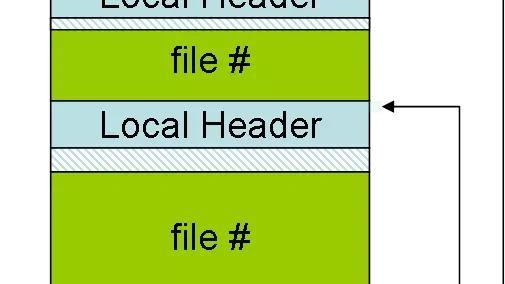Go垃圾回收GC详解
Go的三色标记GC
- 引用计数:对每个对象维护一个引用计数,当引用该对象的对象被销毁时,引用计数减1,当引用计数器为0是回收该对象。
- 优点:对象可以很快的被回收,不会出现内存耗尽或达到某个阀值时才回收。
- 缺点:不能很好的处理循环引用,而且实时维护引用计数,有也一定的代价。
- 代表语言:Python、php、Swift
- 标记-清除:从根变量开始遍历所有引用的对象,引用的对象标记为"被引用",没有被标记的进行回收。
- 优点:解决了引用计数的缺点。
- 缺点:需要STW,即要暂时停掉程序运行。
- 代表语言:Golang(其采用三色标记法)
- 分代收集:按照对象生命周期长短划分不同的代空间,生命周期长的放入老年代,而短的放入新生代,不同代有不能的回收算法和回收频率。
- 优点:回收性能好
- 缺点:算法复杂
- 代表语言: JAVA,python
root
首先标记root根对象,根对象的子对象也是存活的。
根对象包括:全局变量,各个G stack上的变量等。
标记
在之前的Go语言——内存管理一文中,分析过span是内存管理的最小单位,所以猜测gc的粒度也是span。
type mspan struct {
// allocBits and gcmarkBits hold pointers to a span's mark and
// allocation bits. The pointers are 8 byte aligned.
// There are three arenas where this data is held.
// free: Dirty arenas that are no longer accessed
// and can be reused.
// next: Holds information to be used in the next GC cycle.
// current: Information being used during this GC cycle.
// previous: Information being used during the last GC cycle.
// A new GC cycle starts with the call to finishsweep_m.
// finishsweep_m moves the previous arena to the free arena,
// the current arena to the previous arena, and
// the next arena to the current arena.
// The next arena is populated as the spans request
// memory to hold gcmarkBits for the next GC cycle as well
// as allocBits for newly allocated spans.
//
// The pointer arithmetic is done "by hand" instead of using
// arrays to avoid bounds checks along critical performance
// paths.
// The sweep will free the old allocBits and set allocBits to the
// gcmarkBits. The gcmarkBits are replaced with a fresh zeroed
// out memory.
allocBits *gcBits
gcmarkBits *gcBits
}

bitmap
如图所示,通过gcmarkBits位图标记span的块是否被引用。对应内存分配中的bitmap区。
三色标记
- 灰色:对象已被标记,但这个对象包含的子对象未标记
- 黑色:对象已被标记,且这个对象包含的子对象也已标记,gcmarkBits对应的位为1(该对象不会在本次GC中被清理)
- 白色:对象未被标记,gcmarkBits对应的位为0(该对象将会在本次GC中被清理)
例如,当前内存中有A~F一共6个对象,根对象a,b本身为栈上分配的局部变量,根对象a、b分别引用了对象A、B, 而B对象又引用了对象D,则GC开始前各对象的状态如下图所示:
- 初始状态下所有对象都是白色的。
- 接着开始扫描根对象a、b; 由于根对象引用了对象A、B,那么A、B变为灰色对象,接下来就开始分析灰色对象,分析A时,A没有引用其他对象很快就转入黑色,B引用了D,则B转入黑色的同时还需要将D转为灰色,进行接下来的分析。
- 灰色对象只有D,由于D没有引用其他对象,所以D转入黑色。标记过程结束
- 最终,黑色的对象会被保留下来,白色对象会被回收掉。

STW
stop the world是gc的最大性能问题,对于gc而言,需要停止所有的内存变化,即停止所有的goroutine,等待gc结束之后才恢复。
触发
- 阈值:默认内存扩大一倍,启动gc
- 定期:默认2min触发一次gc,src/runtime/proc.go:forcegcperiod
- 手动:runtime.gc()
go gc

go gc
GO的GC是并行GC, 也就是GC的大部分处理和普通的go代码是同时运行的, 这让GO的GC流程比较复杂.
- Stack scan:Collect pointers from globals and goroutine stacks。收集根对象(全局变量,和G stack),开启写屏障。全局变量、开启写屏障需要STW,G stack只需要停止该G就好,时间比较少。
- Mark: Mark objects and follow pointers。标记所有根对象, 和根对象可以到达的所有对象不被回收。
- Mark Termination: Rescan globals/changed stack, finish mark。重新扫描全局变量,和上一轮改变的stack(写屏障),完成标记工作。这个过程需要STW。
- Sweep: 按标记结果清扫span
目前整个GC流程会进行两次STW(Stop The World), 第一次是Stack scan阶段, 第二次是Mark Termination阶段.
- 第一次STW会准备根对象的扫描, 启动写屏障(Write Barrier)和辅助GC(mutator assist).
- 第二次STW会重新扫描部分根对象, 禁用写屏障(Write Barrier)和辅助GC(mutator assist).
从1.8以后的golang将第一步的stop the world 也取消了,这又是一次优化; 1.9开始, 写屏障的实现使用了Hybrid Write Barrier, 大幅减少了第二次STW的时间.
写屏障
因为go支持并行GC, GC的扫描和go代码可以同时运行, 这样带来的问题是GC扫描的过程中go代码有可能改变了对象的依赖树。
例如开始扫描时发现根对象A和B, B拥有C的指针。
- GC先扫描A,A放入黑色
- B把C的指针交给A
- GC再扫描B,B放入黑色
- C在白色,会回收;但是A其实引用了C。
为了避免这个问题, go在GC的标记阶段会启用写屏障(Write Barrier).
启用了写屏障(Write Barrier)后,在GC第三轮rescan阶段,根据写屏障标记将C放入灰色,防止C丢失。
参考:
Go 垃圾回收原理
Golang源码探索(三) GC的实现原理























